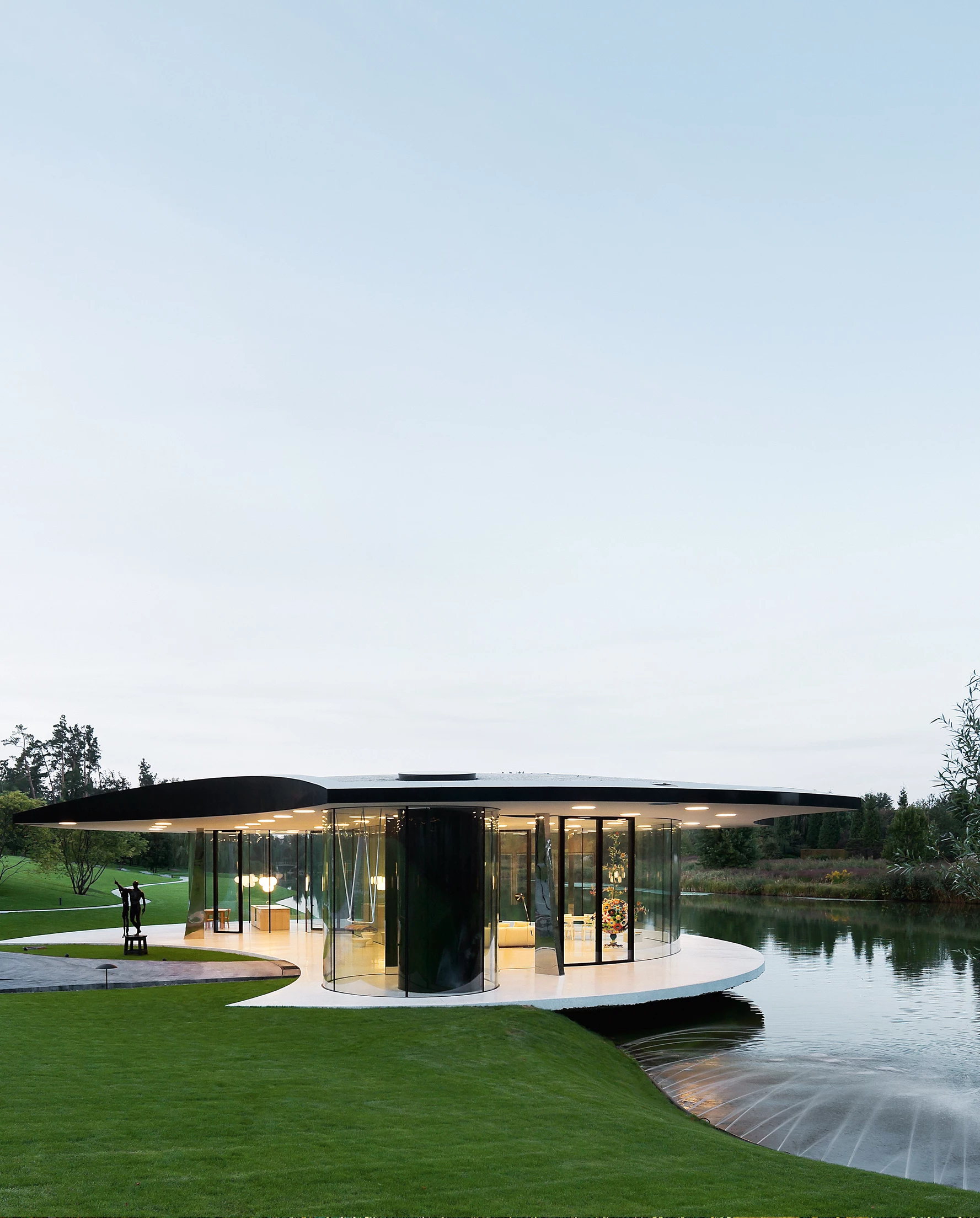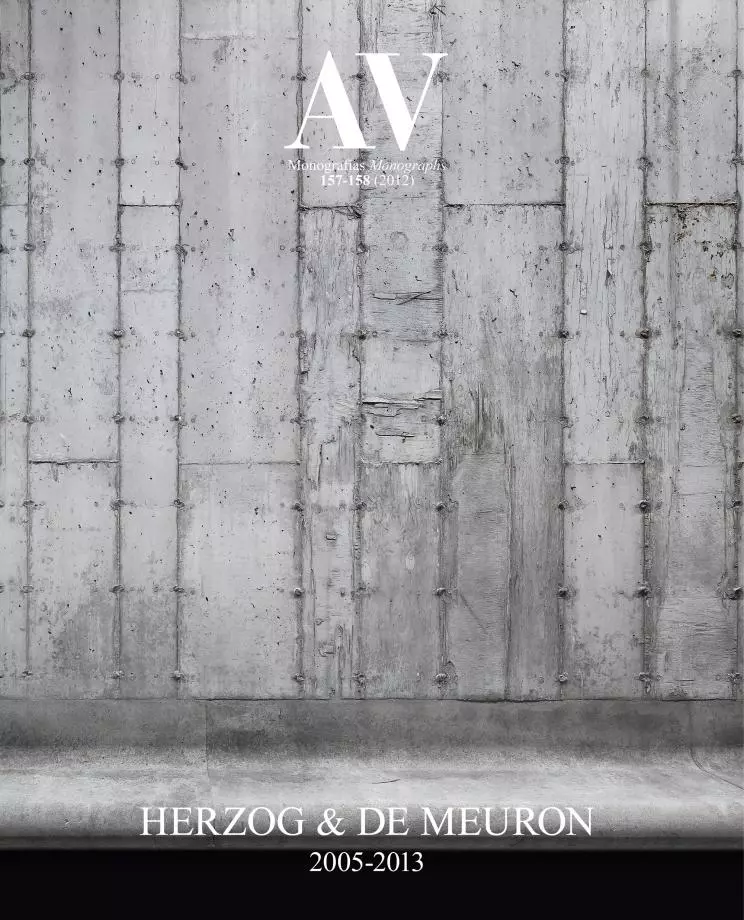Pavilion at a Lakeside
Herzog & de MeuronThe peaceful air of this lakeside environment encouraged the client to build a small shelter in contact with nature, as a counterpoint to his imposing, stonework residence. It was to be a private, intimate place within the surrounding park-like grounds and yet one that could also host events with guests and artists from around the world.
As a starting point, the architects took the client on an excursion through the history of pavilion architecture, making a clear distinction between two main strands of development: on the one hand the hut (‘figurative’, informal architecture); on the other hand, the tempietto (‘abstract’, formal architecture). Along this first line, the architects used the romantic, figurative idea of the shepherd’s hut to develop an unexpected, contemporary proposal, but the client chose to pursue the line of abstraction, in which classicist models were studied along with the modernist architectures of Mies van der Rohe and Philip Johnson or the sculptural and minimal pavilions of Dan Graham.
Throughout the process it became increasingly evident that formal elegance, transparency and abstraction were to be crucial features, steering the project towards sculptural geometries and the material properties of glass. A circular platform with a 27-meter diameter cantilevers over the lakeshore, topped by another roof platform that is slightly offset to provide sun protection. A series of cuts on the platforms favor interaction between these inserted objects and their environment, creating the access space, the openings to let in light and rain, or the terrace, so as to delimit the space between them, with a 4.2 meter clearance. The roof tapers towards the edges, reducing both its physical and visual weight. Circular openings allow for water drainage, while larger radius openings let daylight in, casting reflections upon the pavilion’s white finishes.
The interior spaces open up to the landscape through curved walls of glass. The use of glazing here is a reinterpretation of the transparency and immateriality concepts advanced by Modernism; it works as a partition wall that divides the space into three rooms, separated from the terraces, and in such a way it acquires tangible qualities. Using pure geometries of circles and straight lines, it achieves a lot of complexity and palpable materiality by taking advantage of glass’ physical properties of transparency and reflection. This affects the perception of the pavilion and both reinforces and puts into question one’s sense of being outside and inside.
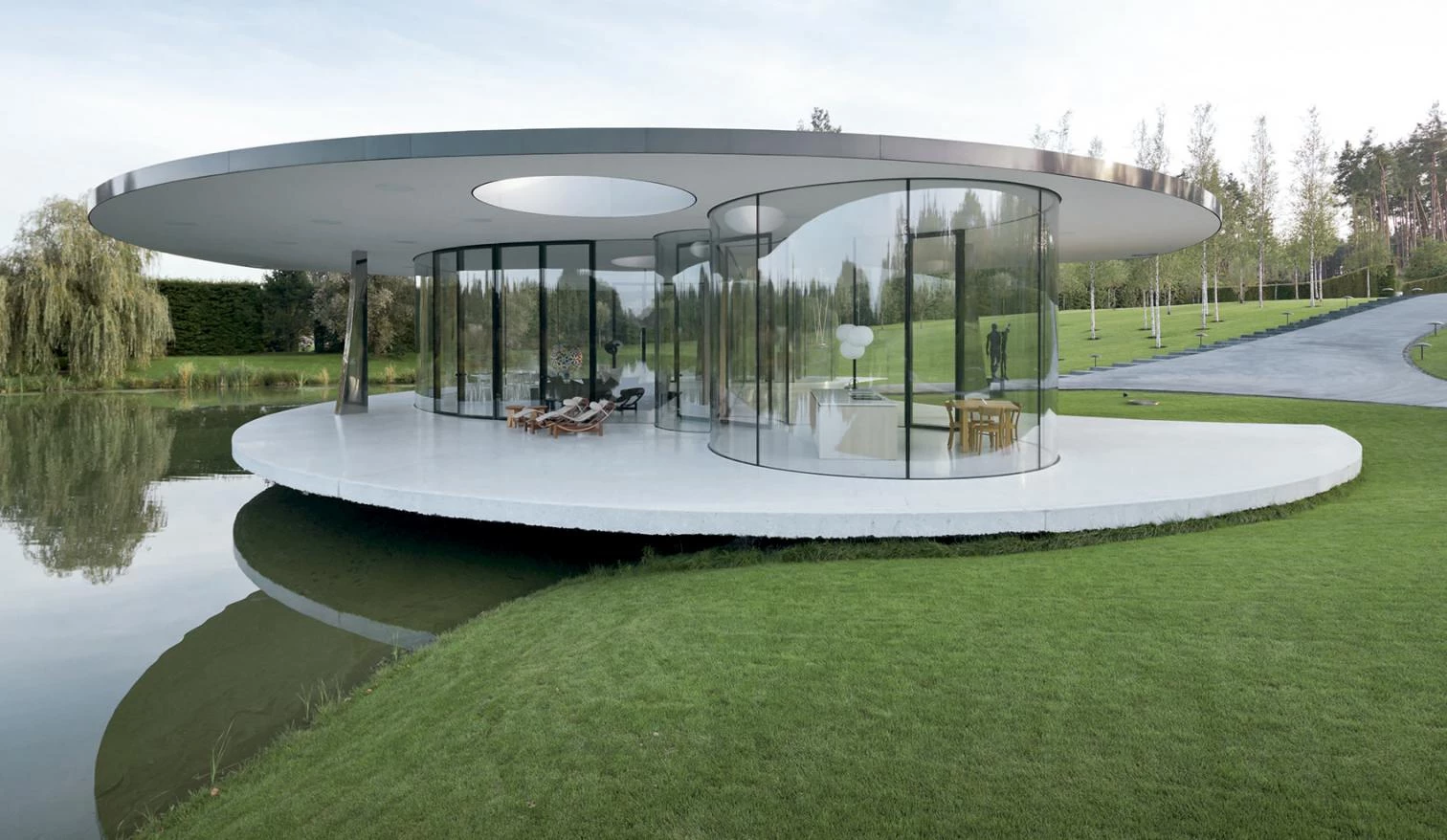
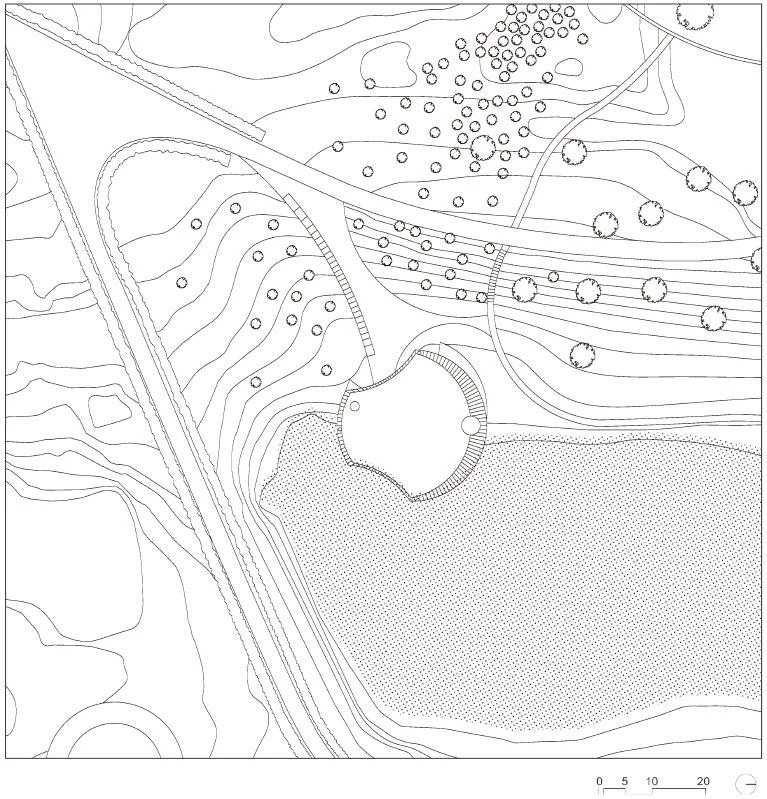



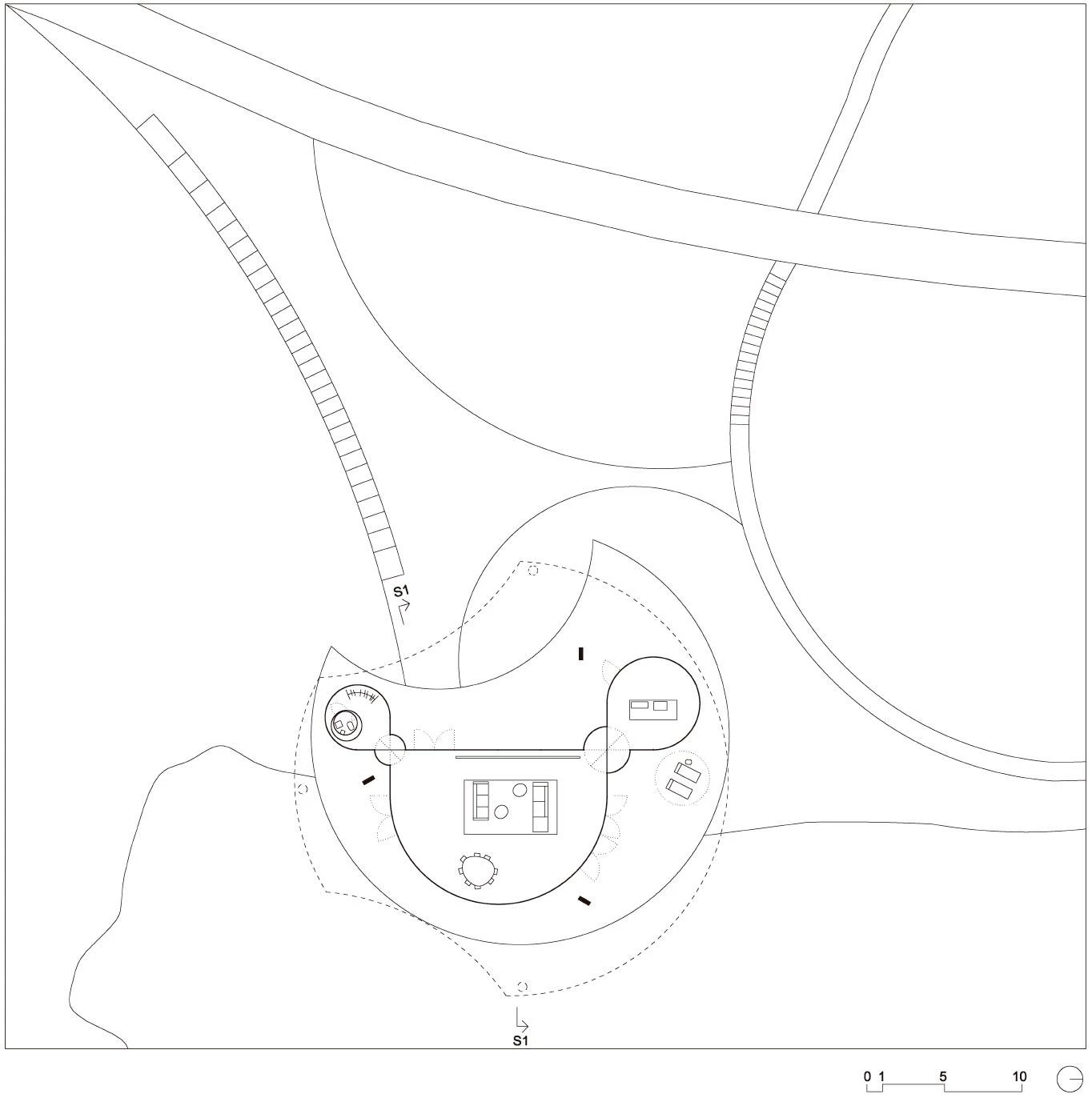
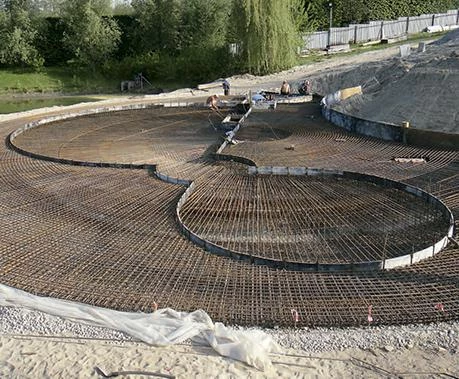


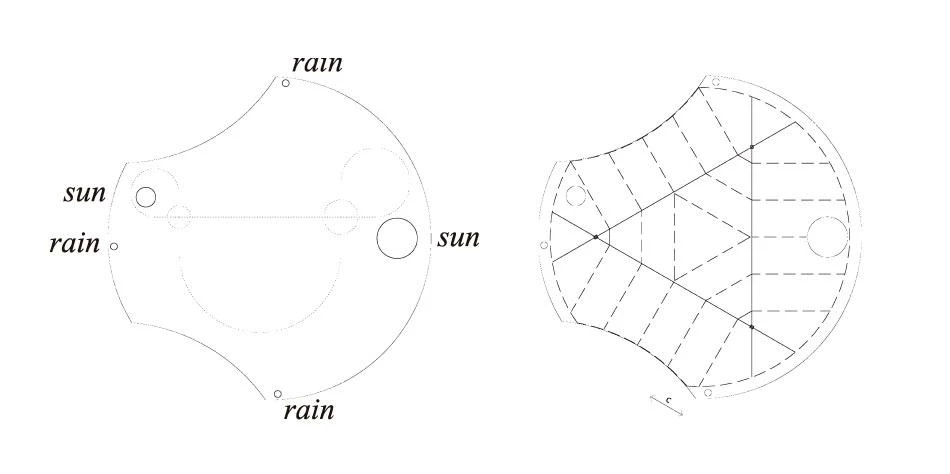

Arquitectos Architects: Herzog & de Meuron
Socios Partners: Jacques Herzog, Pierre de Meuron.
Equipo de proyecto Project team: Wim Walschap (asociado, arquitecto responsable associate, project architect); Maximilian Beckenbauer, Amparo Casani, Simon Demeuse (asociado associate), Luis Gisler, Daisuke Hirabayashi, Stephen Hodgson, Shusuke Inoue, Pawel Krzeminski, Steffen Riegas, Dulcineia Neves dos Santos, Harald Schmidt, Karolina Slawecka, Kai Strehlke, Fumiko Takahama
Planeamiento Planning
Herzog & de Meuron (consultores de diseño design consultants); Nüssli (Schweiz) AG (construcción, estructuras, aparejadores, instalaciones architect construction, structural engineering, construction management, quantity surveyor, HVAC, MEP)
Consultores Consultants
Schnetzer Puskas Ingenieure (estructuras structural engineering); Waldhauser Haustechnik AG (instalaciones técnicas technical installations)
Contratista Contractor
Nüssli (Schweiz) AG
Fotos Photos
Iwan Baan; Nüssli


